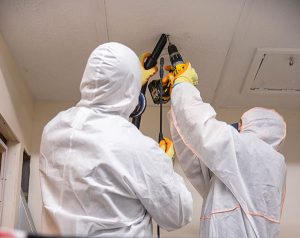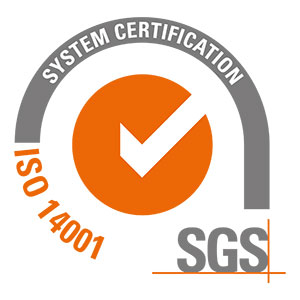Asbestos Removal vs. Repair: Making the Right Choice for Your Property
Who is this article for?
- Residential and domestic owners and landlords who believe asbestos is present in their properties
- Commercial property owners and landlords who have identified asbestos
- Building contractors who suspect asbestos may be present
Asbestos, a fibrous material once widely used in construction, could pose significant health risks when disturbed. If you suspect the presence of asbestos in your property, it’s crucial to address it promptly and effectively. Two common approaches to dealing with asbestos are removal and repair.
In this blog, we will explore the considerations involved in choosing between asbestos removal and repair, helping you make an informed decision to ensure the safety and integrity of your property.
Asbestos Removal
Asbestos removal involves the complete elimination of an asbestos-containing material (ACM) from your property. This approach is often preferred when the ACMs are severely damaged, deteriorated, or if you plan to undertake significant renovation or demolition projects. Complete removal eliminates the risk of future exposure to asbestos fibres and provides peace of mind.

Asbestos Repair
Asbestos repair, also known as encapsulation or enclosure, involves treating the affected materials without removing them. This approach is suitable when the ACMs are in relatively good condition and the damage is localised. Repair techniques involve applying sealants or protective coatings to encapsulate the asbestos fibres, preventing their release and reducing the risk of exposure.
Factors to Consider
Choosing between asbestos removal and repair requires careful consideration of several factors, including the extent of damage, the type of asbestos, future plans for the property, cost, and compliance with regulations. Both approaches have their merits, and the right choice depends on the specific circumstances of your property.
- Extent of Damage: Assessing the extent of damage to the ACMs is crucial in determining whether repair or removal is the best course of action. Severely damaged materials that are crumbling or friable are typically recommended for removal, while localised damage may be suitable for repair.
- Presence of Friable or Non-Friable Asbestos: Friable asbestos, which can easily crumble and release fibres into the air, poses a higher risk and often requires removal. Non-friable asbestos, such as asbestos cement sheets or floor tiles, can sometimes be repaired if the damage is minimal and can be effectively encapsulated.
- Future Plans for the Property: Consider your future plans for the property. If extensive renovations or demolition are anticipated, complete removal of asbestos may be necessary to create a safe working environment. Additionally, some potential buyers or tenants may prefer a property that is entirely asbestos-free.
- Cost and Time: The cost and time required for asbestos removal or repair should also be considered. Removal typically involves more extensive work, including containment, removal, and disposal, which may incur higher costs. Repair, on the other hand, may offer a more cost-effective solution, especially for localised damage.
- Compliance with Regulations: Ensure compliance with local regulations and requirements for asbestos management. Depending on your location and the specific circumstances, there may be legal obligations that dictate the approach to asbestos handling. Consult with asbestos professionals who can guide you through the regulatory landscape.
Consulting with experienced asbestos professionals, such as those at G&L, is essential to assess the situation accurately and determine the most appropriate course of action. Our team of experts can provide guidance, conduct assessments, and deliver safe and effective asbestos solutions tailored to your needs.
With G&L, you can rest assured that your property will be handled with the utmost care and compliance to ensure the safety and well-being of all occupants. Request an asbestos survey or get advice.
Read more:




